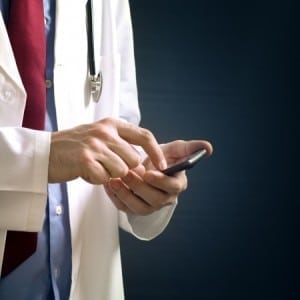 Patients who suffer from diabetic retinopathy can now check the progress of the condition right at their homes. A new application for ophthalmology has been developed in order to facilitate check up of diabetic retinopathy. The application shall work like any other smartphone application and shall support multiple platforms. Therefore, people do not have to have deep knowledge of the ophthalmic condition but yet they will be able to monitor the progress of their conditions by themselves. Since smartphones has a vast customer-base and the number of potential customers is huge in many countries, an application can be expected to be the most conveniently accessible medical centre.
Patients who suffer from diabetic retinopathy can now check the progress of the condition right at their homes. A new application for ophthalmology has been developed in order to facilitate check up of diabetic retinopathy. The application shall work like any other smartphone application and shall support multiple platforms. Therefore, people do not have to have deep knowledge of the ophthalmic condition but yet they will be able to monitor the progress of their conditions by themselves. Since smartphones has a vast customer-base and the number of potential customers is huge in many countries, an application can be expected to be the most conveniently accessible medical centre.
The American Academy of Ophthalmologists (AAO) announced to launch a new application for smartphones during its yearly conference that was held in Chicago. The ophthalmic application for smartphones can help its users in measuring the acuteness of their condition or their near one. The application can also grade the acuteness of the condition in ophthalmology. According to a statement of the academy, the result of the study revealed that the less expensive method can be implemented to make the treatment accessible for those living in underserved or isolate region.
According to another statement, nearly 7.7 million individuals are affected by diabetic retinopathy. The risen level of sugar in blood has been found to be the cause of the ophthalmic issue in most of the cases. Increase in concentration of sugar in the eye leads to partial loss of vision initially and total blindness eventually. Presently, the tests are conducted in a doctor’s chamber with the help of a slit-lamp bio-microscopy used by an ophthalmologist. The statement also noted that even though the examination can determine the visual condition of many people, getting the needed treatment in ophthalmology is mostly not easy for them.
Large specialised equipment that is found in only clinical settings is required to carry out the test presently. Therefore, monitoring the patients who live in less-resource or rural communities becomes a big challenge, highlighted the statement. Scientists of ophthalmology from Federico II, Molise and Brescia universities have developed the technology that has been implemented in the new examination. In the development process, they created a D-eye that can now be attached to an iPhone. Thus, a critical technological device has become a contemporary virtual ophthalmoscope which can be used by anyone who knows how to use an iPhone.
The combined implementation of the traditional method and the new device yielded same results for 85% of the patients of ophthalmology. The traditional device could not grade the eyes of four patients while the iPhone edition fails read when there are as many as 9 patients. Thus, the statement signified the benefit that the innovation adds to the device. It is noteworthy that the method of check-up with a smartphone cheaper than the traditional method by thousands of pounds. The option is affordable that it instils hope of availability of eye care in rural and non-hospital settings, where there is lack of ophthalmic expert personnel usually.
If you need an refurbished ophthalmic equipment visit Vision Systems (http://www.patternless.com/) or cal lthem at 866.934.1030.
Image credit: stevanovicigor / 123RF Stock Photo
